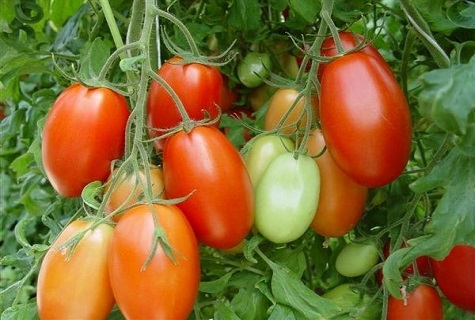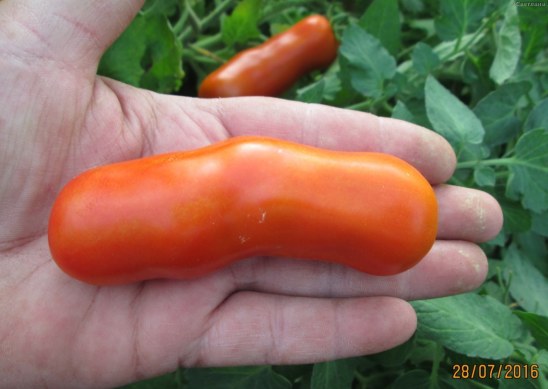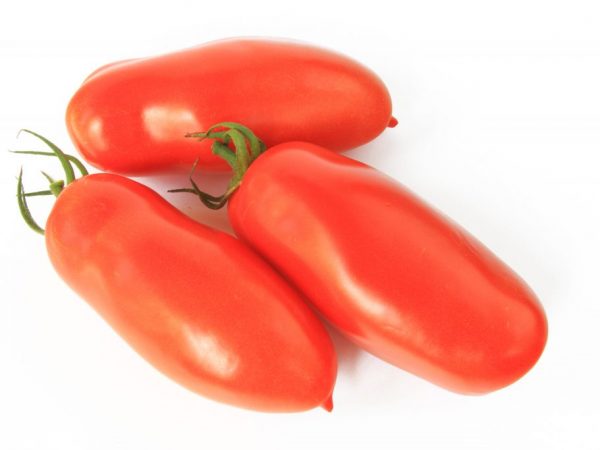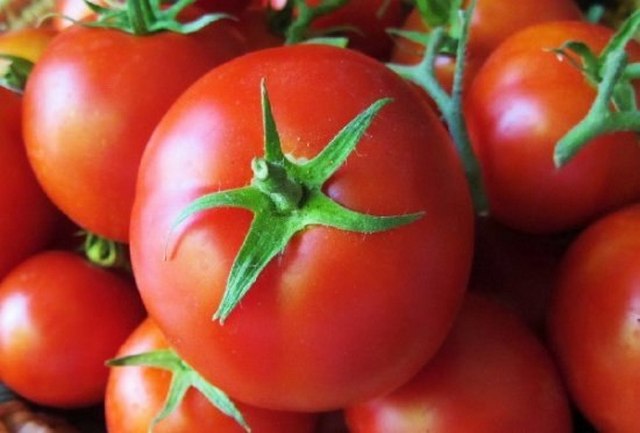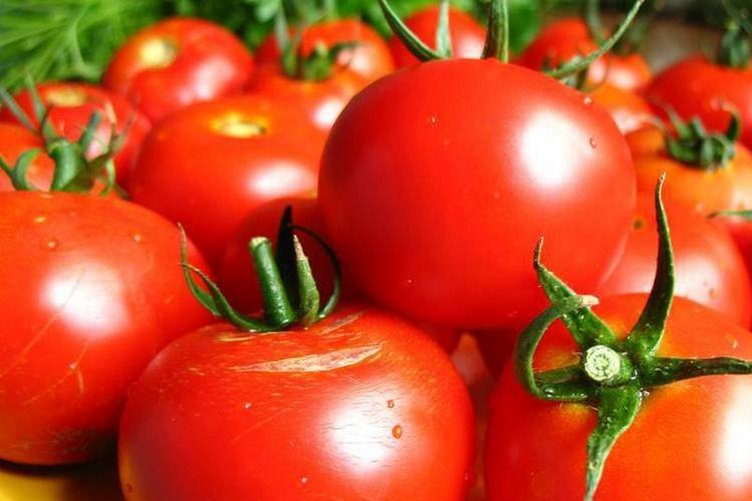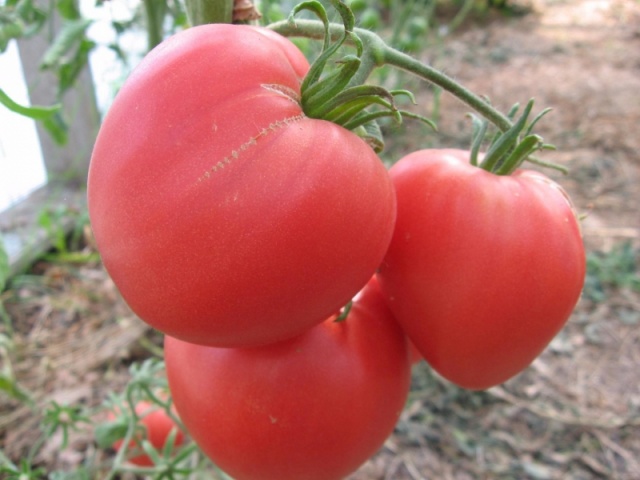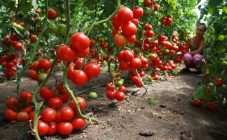Content:
The Casanova tomato variety was bred relatively recently, but has already become popular in our country. This is due to its atypical appearance, marketability and taste. The variety is very picky about growing conditions and will give a bountiful high-quality crop only with a certain level of agricultural technology. The characteristics and description of the Casanova tomato variety are presented in the article.
Description and appearance
Tomatoes are considered one of the most common vegetable crops in Russia and around the world. Due to their taste and relative ease of cultivation, they have gained such widespread popularity. There are several thousand varieties for different growing zones, and the list is constantly growing. One of the new varieties is Casanova.
It belongs to the varieties of West Siberian selection and was included in the State Register of Breeding Achievements in 2017. The variety is characterized by a significant bush height: it reaches a height of 2 meters. Casanova belongs to indeterminate varieties and is not able to stop growing on its own. Usually 4-5 fruits are formed on one hand.
The fruits are large, weighing 150-200 grams. They have an elongated shape, atypical for tomatoes, with a split bottom. The length of the ripe fruit is about 20 cm. Tomatoes have a bright red color, a pleasant sweetish taste, a smooth and dense skin.
The variety belongs to the mid-season. 110-115 days pass from planting to ripening. With a standard planting in March, the first fruits usually appear in mid-July.
Advantages and disadvantages of the variety
The main advantage of the Casanova tomato variety is its high yield. For a season, with proper agricultural technology, up to 12 kg of ripe fruits can be harvested from 1 square meter.
Tomatoes are distinguished by their increased transportability and keeping quality. The fruits do not burst or crack during storage, and also retain their shape when canned.
The main disadvantages of the variety include its high thermophilicity and insufficient frost resistance, which limits the possibility of its cultivation in open ground. Therefore, in the northern and central regions, the Casanova tomato is grown mainly in greenhouses.
Features of agricultural technology
Casanova, like most varieties of tomatoes, is very picky about cultivation conditions and agricultural technology. To obtain a high-quality harvest, a number of rules must be followed.
Seedling preparation
You need to sow seedlings about two months before transplanting to a greenhouse or open ground. You need to choose the most healthy and high-quality seeds, prepare them: put them on the surface of a damp cloth or napkin and leave it overnight.
Treatment with disinfectants and growth stimulants is recommended. In the first case, use:
- hydrogen peroxide;
- phytosporin;
- potassium permanganate;
- aloe juice.
Usually used as growth stimulants:
- Immunocytophyte;
- Epin-Extra;
- Zircon.
For planting seeds, it is necessary to prepare special containers in advance. Usually these are boxes up to 10 cm deep, which are filled with turf soil and humus in equal proportions. Optionally, it is allowed to add peat, coconut substrate, sawdust.
Important! It is recommended to freeze the primer, if possible, before use.
The seeds must be planted in the soil mixture to a depth of about 1 cm, then cover the box with glass and move it to a room with a temperature of about + 23 ... 25C. There should also be enough light in this room, and in the first days after planting the seeds, the lighting should be around the clock. With a lack of light, the seedlings turn yellow or die completely (especially with a simultaneous excess of moisture).
You need to water the seedlings every 5-7 days, and if the soil is dried up, more often. Warm water to room temperature before irrigation.
Important: there should be no drafts in the room!
When the seeds germinate, the stems get stronger and the first petals begin to form on them, the temperature in the room can be reduced to + 16 ... 20C. In the same period, a pick is carried out, for example, in half-liter plastic cups. You can take dishes of a smaller volume, but when the seedlings grow, they will have to be replanted again.
During the period of growing seedlings, it is necessary to feed young plants in a timely manner. The first procedure is carried out in the phase of appearance of the third leaf with the use of Agricola No. 3 fertilizer. After 2-4 weeks after the pick, the second and third feeding is carried out, respectively. Complex fertilizers are suitable for this, they need to be diluted in a proportion of 1 tbsp. l. for 5 liters of water. Each individual plant requires about 100 ml of solution.
Two weeks before transplanting the seedlings, the seedlings of the Casanova variety begin to gradually harden. In the early stages, it is recommended to protect plants from sun and wind with a covering material.
Transplanting seedlings
The readiness of seedlings to move into open ground conditions is determined by the following criteria:
- The seedling has reached a height of 30 cm.
- Stems are strong, thickened, 5-7 leaves are formed on each of them.
- The seedling has at least 1-2 flower clusters.
- The internodes became shortened.
Special holes for seedlings are made in the soil, the size of the depression must correspond to a plastic cup with seedlings. It is allowed to plant no more than 4 plants on 1 square meter of soil. Strong, dense, fully formed seedlings are planted at an angle of 90C, while thin and weakened seedlings are sown at an angle of 45C. When the seedling is immersed in the hole, it is buried, the earth is compacted and spilled abundantly.
After planting, the soil must be mulched. Mowed dried grass or straw, as well as last year's hay, will do.
When cultivated in a greenhouse, the transplant is carried out earlier, since the soil in it warms up much faster. The beds have been prepared since autumn, and the soil and greenhouse are disinfected. Potassium and phosphorus are introduced in the fall at the rate of 30 grams per square meter, and nitrogen - in the spring, at 15 g / m2. If the greenhouse was not opened for the winter, then nitrogen fertilizers are also allowed to be applied in the autumn.
Care and irrigation
During the period of fruit ripening, it is very important for plants to ensure the flow of moisture. With a lack of water, tomatoes become small or crumble. Watering is carried out once a week in the morning with heated water. After each irrigation, the soil in the bush sector should be loosened. When grown in greenhouse conditions, it is recommended to organize drip irrigation.
In the process of cultivation, Casanova needs to be fed on time. The procedure is recommended once every one and a half to two weeks. For this, both special mineral fertilizers for nightshades and organic matter are used, which include:
- ash;
- shell;
- chicken droppings.
Additional Information. To accelerate the flowering of the variety, it is recommended to spray the plants with boric acid, which is diluted in a proportion of 5 g per liter of water.
It is necessary to carry out pinching in a timely manner, this will allow the formation of a sufficient number of stems (usually no more than two). The procedure consists in removing young shoots that form in the leaf axils. This will speed up the fruiting process and extend its term.
The bushes of this variety grow tall, and special supports are used to strengthen them in the soil: pegs, trellises and special cages for vegetables.
Protection against diseases and pests
The Casanova tomato variety is usually susceptible to disease throughout the growing season. The most dangerous for this variety are:
- late blight (brown rot);
- brown spot (cladosporium);
- fusarium wilting (apical rot);
- top rot;
- phomosis;
- dry spotting (alternaria).
The following fungicides are used to combat diseases:
- Barrier;
- Barrier;
- Oxyhom;
- Hom;
- Tattu;
- Anthraccol;
- Consento.
Pests are no less dangerous for Casanova:
- whitefly;
- spider mite;
- wireworms;
- slugs;
- bear;
- aphid.
Against insects on the Casanova variety, insecticides are used such as:
- Confidor;
- Karbofos;
- Bazudin;
- Thunder.
Please note that plants that are fully provided with all the essential nutrients and chemicals are less susceptible to disease.
Harvesting
The collection of Casanova fruits begins when they reach the desired size and acquire a brown color. Plucked tomatoes are sent for ripening. For this purpose, they are placed in wooden boxes in 3-4 layers, layering with clean straw. The humidity in the room should be about 85%, the temperature should fluctuate within the range from +20 to + 25C. It is necessary that the room with the tomatoes is sufficiently ventilated, but without drafts.
Collecting Casanova tomatoes is allowed throughout the entire ripening period until the first frost. It is advisable not to harvest crops that have fallen under the temperature drop below -10C at night, as they can rot during storage.
If the conditions of agricultural technology of the Casanova variety are observed, high and high-quality yields can be achieved. Protection from negative biotic and abiotic factors will allow you to keep the fruits in value and use them for food.
